How to pin comments on TikTok

How to pin comments on TikTok, TikTok allows users to pin comments easily. Here's how to pin comments on TikTok videos.
To run as administrator in Windows 11 means launching an application with elevated privileges. To prevent unauthorized changes to the operating system, Windows 11 apps and games start, by default, with standard permissions, but there are certain programs, like security software, that require admin rights to run correctly or perform specific tasks. Luckily, the process is easy: all you need are administrator credentials and our instructions. Read this guide to learn how to run as Administrator in Windows 11:
Contents
NOTE: Using most of the methods in this guide to run as administrator triggers a UAC prompt asking for further confirmation and, if you’re launching an app using a regular account, an administrator password.
1. How to Run as administrator from an app’s pinned Start Menu shortcut
In Windows 11, you can use the contextual menu of any pinned app to run it with administrative permissions. To begin, open the Windows 11 Start Menu and find the app you want to launch in the Pinned section. Next, right-click or press and hold on it to open its contextual menu, and then click or tap on “Run as administrator.”

Choose Run as administrator from a pinned app's contextual menu
Alternatively, you can also hold down the Ctrl and Shift keys on your keyboard and click/tap on the app you want to run as administrator in Windows 11, or use your keyboard to highlight it and then the Ctrl + Shift + Enter keyboard shortcut to launch it.
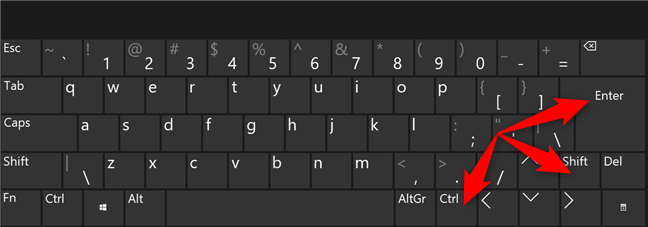
Use Ctrl + Shift + Enter on the highlighted pinned app
TIP: If you like this method, you may be interested in learning more about pinning apps to the Windows 11 Start Menu.
2. Run a program as admin using its shortcut from the All apps list of the Windows 11 Start Menu
The All apps section of the Start Menu can also be used to run as administrator in Windows 11. First, open the Start Menu and access All apps.
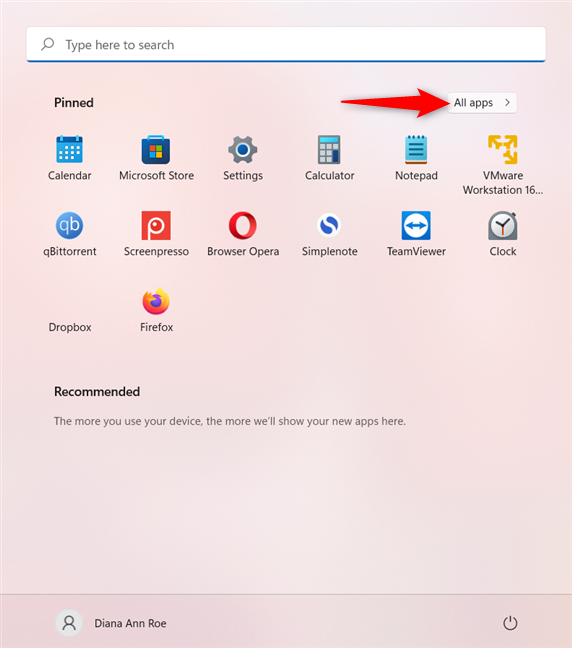
Access the All apps list in Windows 11
Find the program's shortcut in the list, and right-click or press-and-hold on it to open a contextual menu. Next, click, tap, or hover over the More option, and then press on “Run as administrator.”
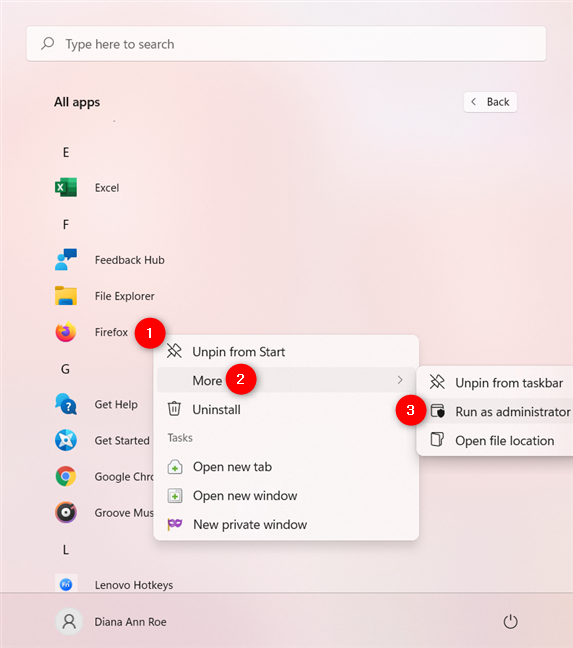
Choose Run as administrator from the shortcut's contextual menu
Alternatively, you can hold down Ctrl and Shift on your keyboard and click or tap on the app you want to run as administrator in Windows 11.
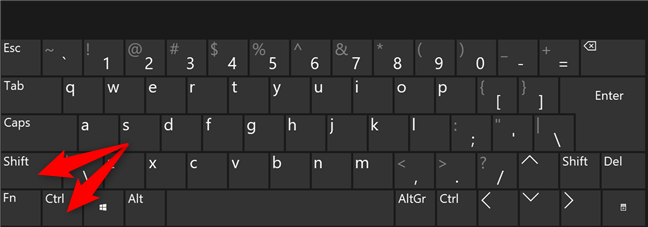
Use Ctrl and Shift on the app you want to run as administrator
3. How to Run as administrator from an app’s shortcut
If you have a shortcut for the app you want to run as admin on your desktop or anywhere else, you can open its right-click menu. Then, click or tap on the “Run as administrator.”
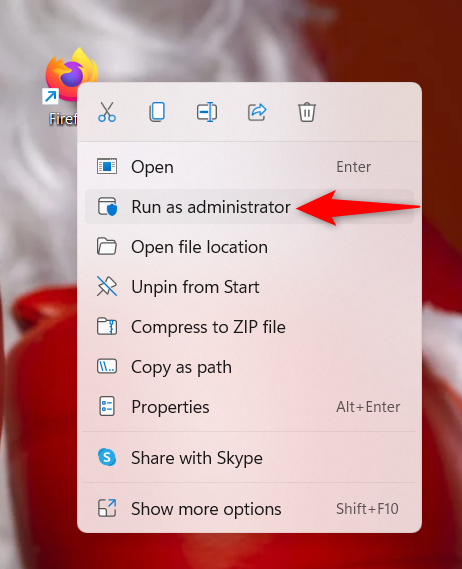
Press Run as administrator from the contextual menu
4. Run an app as administrator from its taskbar shortcut
In Windows 11, another way to run an app with administrator permissions is from its taskbar shortcut. First, right-click or press-and-hold on the shortcut. Next, right-click or press-and-hold again on the program’s name. Finally, click or tap on “Run as administrator” from this menu.
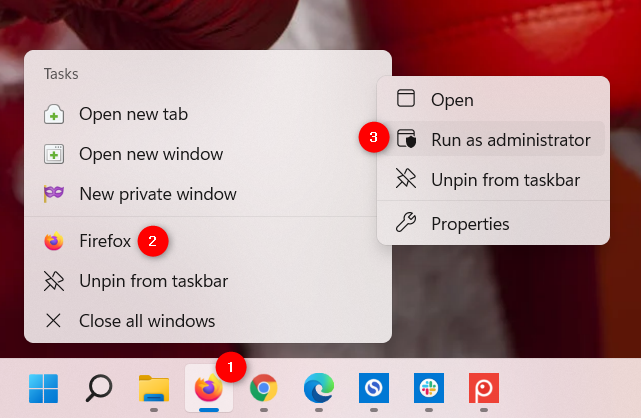
Use a taskbar shortcut to run as administrator in Windows 11
You can also hold down Ctrl + Shift and click/tap on an app’s taskbar shortcut to run it with administrator permissions in Windows 11.
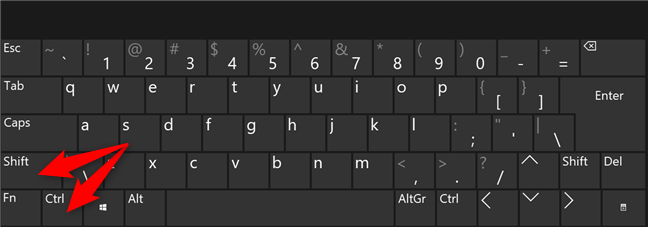
Use Ctrl and Shift on the app you want to run as administrator
TIP: To pin an app to the taskbar, read our guide about adding shortcuts to the taskbar in Windows 11.
5. How to run as administrator from an executable’s contextual menu
While shortcuts are easy to find, you can also run a program as administrator in Windows 11 from the main executable file's contextual menu. In File Explorer, navigate to the app’s executable file. Right-click or press-and-hold on it to open the contextual menu, and then click or tap on “Run as administrator.”

Click or tap on Run as administrator
6. Run a program as admin using the Windows 11 Search
First, use the Windows 11 Search to find the program you want to run as admin. On the right pane, click or tap on “Run as administrator.”
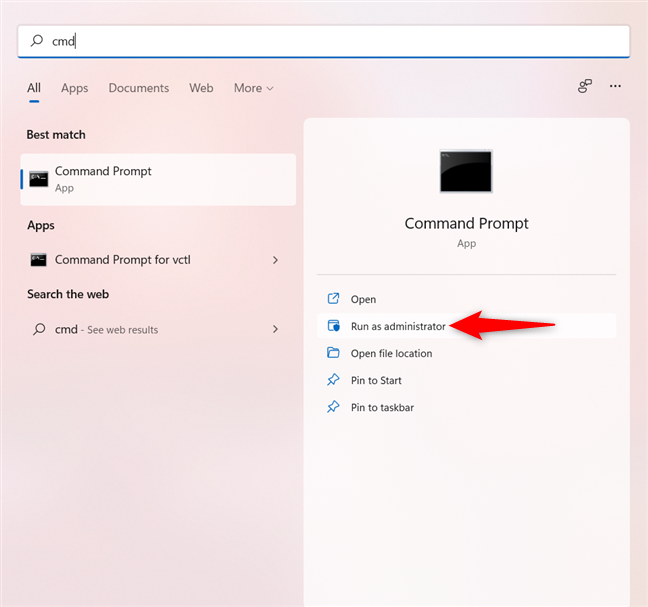
For CMD, the Run as administrator option is immediately available
If you don’t see the option in the right pane, use the down arrow to expand the list of options.
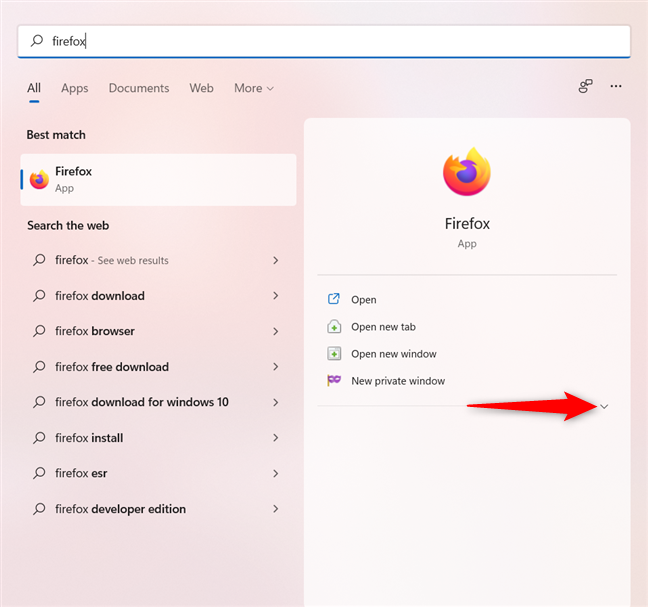
Use the arrow down to reveal the Run as administrator option
Alternatively, right-click or press-and-hold on the correct search result and click or tap on “Run as administrator” from the contextual menu.
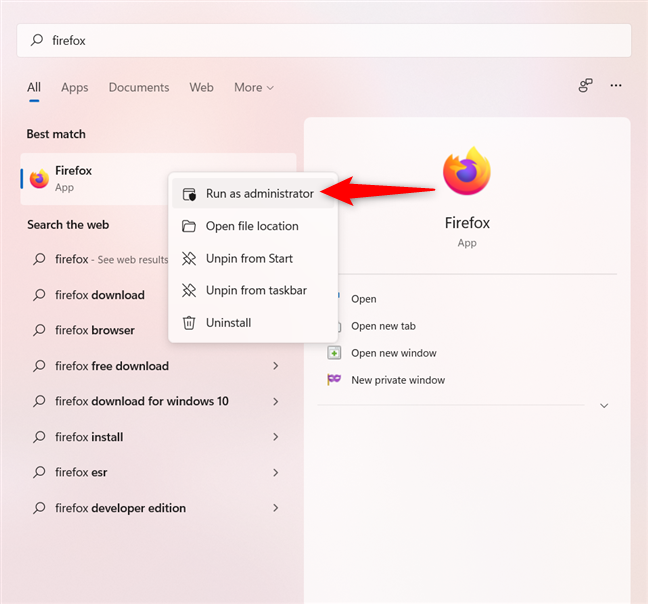
Press Run as administrator from the contextual menu
You can also use the arrow keys to highlight the appropriate search result in the left pane. Then, use the Ctrl + Shift + Enter keyboard shortcut to run that program as administrator.

Use Ctrl + Shift + Enter on the highlighted search result
7. How to run as administrator on Windows 11 from the Run window
First, open the Run window and insert the name of the executable for the program you want to run as admin.
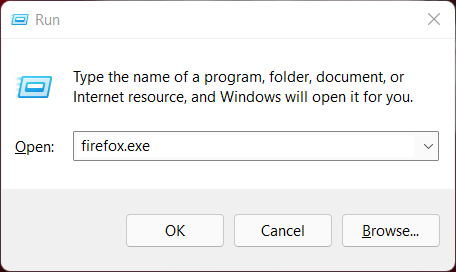
Type the name of the executable in the Run window
Then, hold down Ctrl and Shift on your keyboard and click/tap OK or the Enter key.
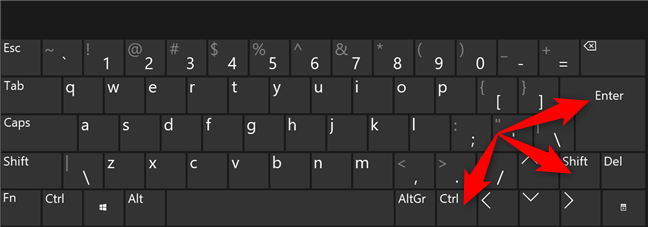
Use Ctrl + Shift + Enter to launch the app as administrator
8. Run as admin from the Task Manager
You can also launch a program as administrator in Windows 11 by using the Task Manager. First, start the Task Manager and, if it opens up in its compact view, click or tap on More details.
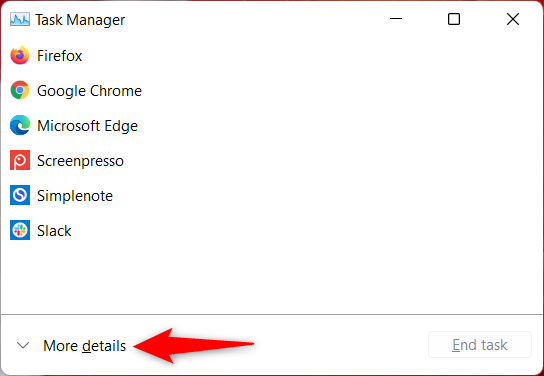
Click or tap on More details
Open the File menu from the upper-left corner and click or tap on “Run new task.”
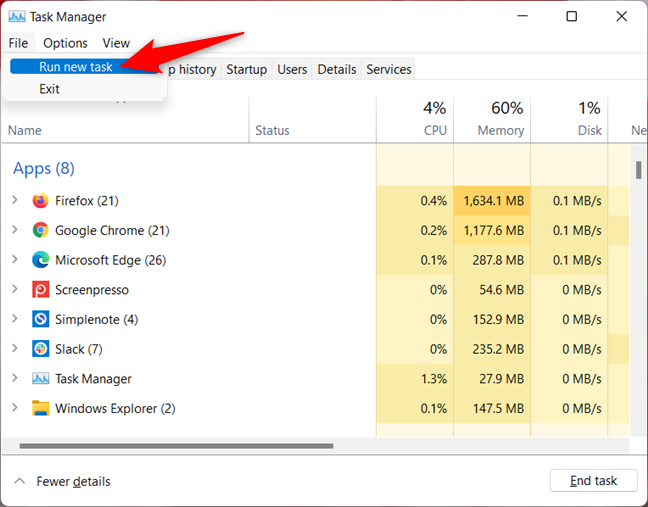
Access Run new task from the File menu
In the “Create new task” window, use the Open field to enter the path to the program you want to launch as administrator, or click or tap on Browse to navigate to it. Make sure to check the “Create this task with administrative privileges” option, and then click or tap on OK.
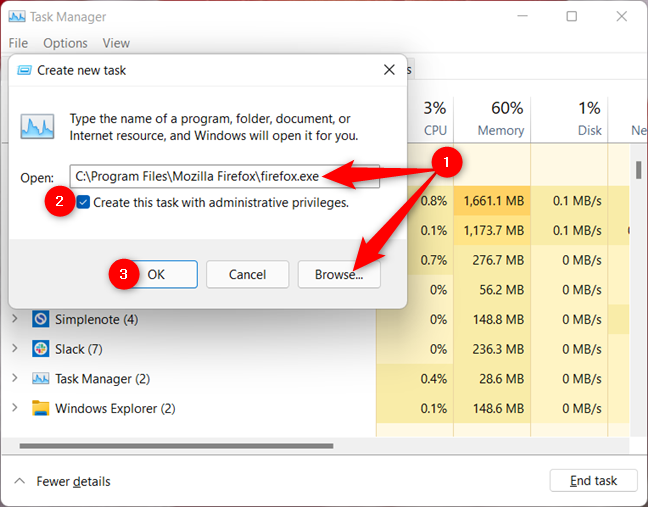
Enter the path to the program, check the box, and hit OK
TIP: Using this method of launching programs as administrator lets you skip the UAC part of the process because the app automatically inherits the permissions of the Task Manager - in our case, administrator permissions. If you only have standard user permissions on the device, the checkbox is missing.
9. Use Windows Terminal, PowerShell, or CMD to run as administrator in Windows 11
If you like command-line environments, access Windows Terminal, PowerShell, or Command Prompt to run a program as administrator. Enter the following command in the Windows Terminal, CMD, or PowerShell window:
runas /user:"your_computer_name\administrator_name" "C:\path\program.exe"
Replace your_computer_name with your computer's name, administrator_name with the name of a user account with administrator permissions on your system, and C:\path\program.exe with the complete path to the app you want to run as administrator. If you enter the command correctly, you are prompted to enter the administrator's password. Then, press Enter on your keyboard once again.
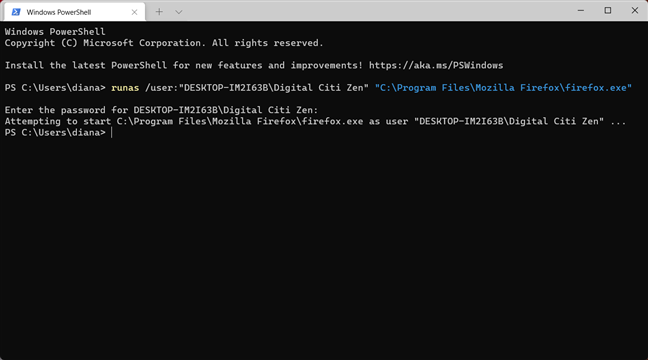
Run a program as administrator from Windows Terminal
TIP: This method is more complicated, but you get to skip the UAC part of the process.
10. Always run a program with administrator permissions
To set a program to always run with administrative permissions, first, locate its main executable file. Right-click or press-and-hold on it, and then click or tap Properties.
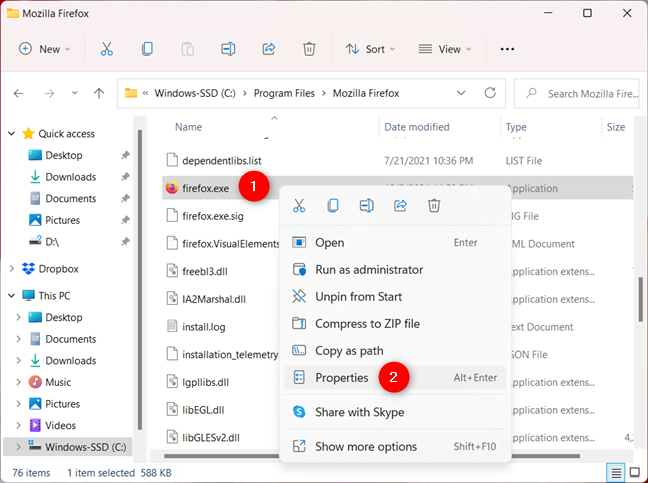
Right-click and access Properties
In the Compatibility tab, check the box next to “Run this program as an administrator” and click or tap on Apply or OK.
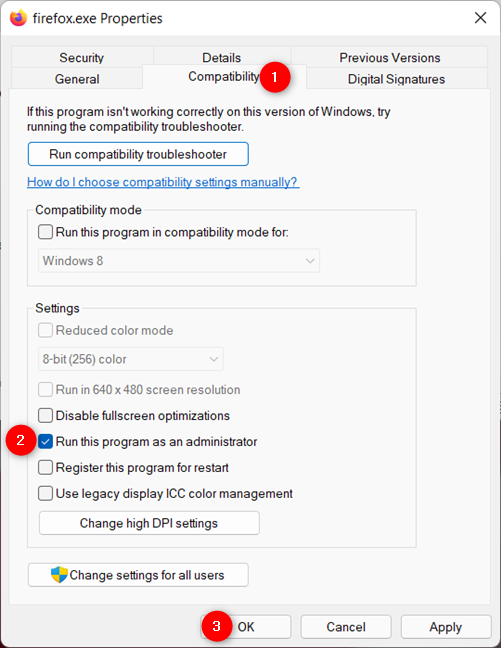
Enable the option to run as admin and press OK
This setting is applied, and, from now on, the program always runs with administrator permissions.
TIP: You can also get the same result by editing the Properties of a program's shortcut.
11. Use the Windows Task Scheduler to run a program with administrative permissions
You can use the Task Scheduler to run a program as administrator without the UAC (User Account Control) prompt. The process is simple, as you can learn from this step-by-step guide on using the Windows Task Scheduler to run apps without UAC prompts.
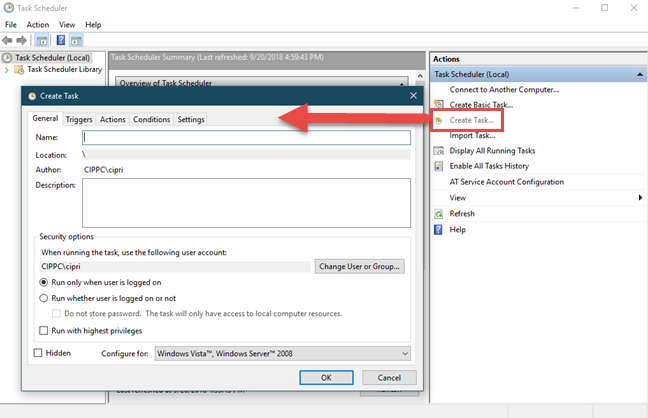
Task Scheduler can run a program as administrator
Which way to Run as administrator do you prefer?
Very few programs actually require elevated privileges in Windows 11. However, the eleven methods above should be more than enough for those rare cases when you do need to run an app with administrative permissions. Before you close this guide, let us know which method(s) you plan to use. Did you already use some of them? Let us know in a comment.
How to pin comments on TikTok, TikTok allows users to pin comments easily. Here's how to pin comments on TikTok videos.
Instructions for Organizing a Q&A session on Facebook, Recently, Facebook has launched the feature to create a Q&A session, when you post a question for everyone to answer.
Instructions for installing and recording videos with Likee, Likee is an application that supports extremely beautiful and impressive video recording, and is loved by many young people today. The following,
How to export the list of meeting participants in Zoom, How to take attendance on Zoom is not difficult, it even allows you to export the list of students participating in the class.
How to change font on Xiaomi, Want to create a new image for Xiaomi device? Just follow the instructions below to change the font style and size above
Instructions for creating a mirror image effect on Picsart, Picsart is an application where users only need to perform a few simple steps to transform the photo.
How to add new fonts to Microsoft Word, Can't find the font you want to use for documents in Microsoft Word? Don't worry, you can install new fonts for Word according to these steps
How to turn off the computer screen and still have the computer running, How to turn off the PC screen and still have the computer running on Win 10/11? Very simple. Here's how to turn off the computer screen
To fix the “An unexpected error occurred” issue when logging in to Facebook, you can try the following steps
Users reported that their Facebook, Messenger and Instagram accounts were suddenly logged out and could not be accessed again, both on the app and web version.
Instructions on how to take photos on Tiktok are extremely simple. Tiktok is a famous application for recording and creating short videos on social networks. However, this application also
How to find and get Instagram links, Instagram is one of the most popular and easy-to-use social networking platforms today. However, because it is designed specifically for mobile,
Instructions for locking the mouse cursor when playing games on BlueStacks, Instructions for turning on/off the mouse cursor lock feature when playing games in the BlueStacks App Player emulator.
Instructions for installing and using Faceapp using an emulator on PC, Simple and easy instructions on how to install and use the Faceapp face editing app using an emulator on PC
Instructions for creating a cover photo group on Facebook, Creating a cover photo group is a feature that helps users set Facebook cover photos with many different images (maximum of 6 photos).
Learn how to effectively use the Stochastic Indicator for technical analysis on Bubinga. Explore advanced techniques to enhance your trading strategies
Instructions for adding angel wings to photos using PicsArt, PicsArt is a photo editing application used by many people today. Today WebTech360 will introduce the article
How to turn off the Just accessed notification on Zalo. This article WebTech360 will guide you to turn off the Just accessed notification under your Zalo chat name.
Instructions for blocking and unblocking accounts on TikTok. Similar to other social networking applications, TikTok also allows users to block someone's account
How to write a long status with a colorful background on Facebook, Today, WebTech360 will introduce some steps to post a long status with a colorful background on Facebook,


















